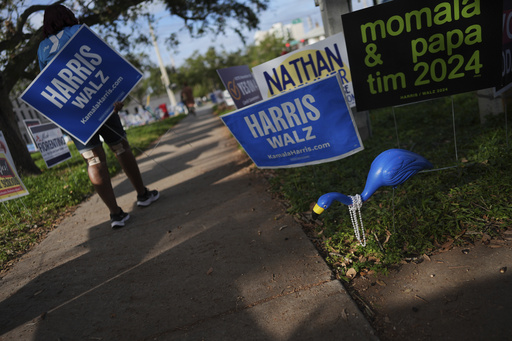
WASHINGTON — A robust performance by Donald Trump has led to a decisive victory for the former president in Florida, a state that has been increasingly veering away from Democratic support. A notable moment was when Trump was projected to secure Miami-Dade County—historically a Democratic bastion—as the race was called shortly after 8:00 p.m. ET.
Trump not only surpassed his previous 2020 numbers in Republican strongholds but also made significant gains in key battleground areas. He was ahead of Vice President Kamala Harris by 11 percentage points with approximately 80% of the expected votes reported when the race was declared.
The extent of Trump’s lead in Miami-Dade County took many by surprise and proved disheartening for Democratic supporters. It has been several decades since a Republican presidential candidate achieved victory in this county, which Joe Biden had won by about 7 percentage points during the last election cycle.
When the race was announced, more than 81% of the votes in Florida had been tallied. Harris would have required 73% of the remaining votes to surpass Trump’s lead, making a comeback exceedingly unlikely.
Candidates in the race included President Harris (D), Trump (R), Claudia De la Cruz (Socialism and Liberation), Chase Oliver (Libertarian), Peter Sonski (American Solidarity), Jill Stein (Green), and Randall Terry (Constitution). The winner was announced as Trump.
Poll closing times were staggered across two time zones at 7 p.m. and 8 p.m. ET. Florida has often been a crucial battleground state, having last swung in favor of a Democratic presidential candidate over ten years ago when Barack Obama narrowly defeated Mitt Romney.
Florida’s political landscape has shifted dramatically, largely due to missteps by Democrats and changes in demographics. This transformation was highlighted by Republican Governor Ron DeSantis, who won by nearly 20 points in 2022, even capturing Miami-Dade County, formerly a Democratic stronghold.
The migration of conservative seniors and immigrants fleeing oppressive regimes, like the one in Venezuela, have reshaped the political environment, akin to how Cuban exiles became reliable Republican backers decades ago.
Conversely, the Democratic Party has faced challenges such as difficulties in recruiting candidates and financial struggles. There was a mistaken belief that younger Cuban Americans would be drawn to the party, but this has not materialized. Adding to their challenges, the high costs of advertising in a state with various media markets have left Democrats in a precarious position.
It’s worth noting that the young voters participating in this election were not alive during the 2000 presidential election, a time marked by contentious disputes over ballots that eventually reached the Supreme Court, resulting in George W. Bush’s narrow win over Al Gore by just 537 votes.
In presidential elections, Florida is a major target, with a significant bounty of 30 electoral votes at stake.
The early call for the race was made as the AP assessed that Harris had no viable mathematical pathway to overcome Trump’s substantial lead given the amount of votes still outstanding.
